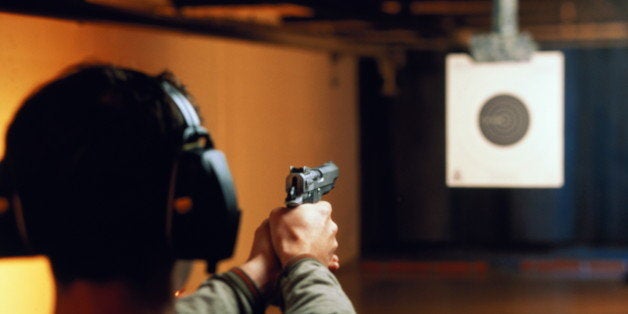
After years of listening to Wayne LaPierre croon away about how "only thing that stops a bad guy with a gun is a good guy with a gun," we finally have some real data to test whether this rationale for arming civilians (and selling more guns) is really true. I'm referring to a report on active shooting incidents just released by the FBI which analyzed 160 "active shootings" resulting in injuries to 1,043 victims, including 486 deaths, between 2000 and 2013.
Most of the media coverage of this report will no doubt focus on the FBI's claim that the number of incidents and victims totals of these shootings has of late been going up, with the annual number of incidents averaging 7.5 between 2000 and 2006, and jumping to an annual average of 16.3 between 2007 and 2013. The increase in casualties each year is even more dramatic, with the totals (not including the shooters) going from 247 between 2000 and 2006 up to just under 800 over the following seven years. It should be noted, incidentally, that the FBI defines an "active shooting" as an incident during which "both law enforcement personnel and citizens [my italics] have the potential to affect the outcome of the event based upon their responses." Which is exactly what Wayne-o claims his gun-toting compatriots are all about.
Here's how these incidents ended. More than half (56 percent) were terminated by the shooter who either took his or her own life, simply stopped shooting or fled the scene. Another 26 percent ended in the traditional Hollywood-like fashion with the shooter and law enforcement personnel exchanging gunfire and in nearly all of those situations the shooter ended up either wounded or dead. In 13 percent of the shooting situations, the shooter was successfully disarmed and restrained by unarmed civilians, and in 3 percent of the incidents the shooter was confronted by armed civilians, of whom four were on-duty security guards and one person was just your average "good guy" who happened to be carrying a gun.
The fact that 21 of these shooting situations were terminated by unarmed civilians as opposed to a single incident that ended because a good guy had a gun might come as a big surprise to the NRA, but for those of us who try to engage in the gun debate by issuing statements based on facts, this finding is consistent with other evidence that the pro-gun community chooses to ignore. For example, in 2005 Gary Kleck published a study funded by the Department of Justice which showed that persons who resisted assaults by running away or calling the police had a better chance of escaping injury than if they resisted the assault with a gun. This is the same Gary Kleck whose 1994 paper claiming that millions of Americans thwart crimes each year with guns is still cited by the NRA as its gospel for justifying civilian armed defense.
The FBI report not only debunks the "good guy stops the bad guy" nonsense, but also gives us some important data to judge the validity of another NRA mantra, namely, whether "bad guys" are drawn to commit shootings in gun-free zones. This bromide was all over the media after the Aurora theater shooting when it was pointed out by John Lott that the Cinemark was chosen by James Homes because it was the only theater showing the movie Batman that had a policy against allowing patrons to carry guns.
According to the FBI, of the 160 active shootings, 39 or roughly 25 percent took place in educational facilities and the shooters were overwhelmingly students who either attended or had attended the particular school. In most of these cases the connection of the shooter to the school was the motivating issue, not the fact that the schools were gun-free zones. More than two-thirds of all the active shooting incidents between 2000 and 2013 took place in locations which were not readily understood to be gun-free zones. But why let facts stand in the way of an opinion or, better yet, a good marketing scheme?
